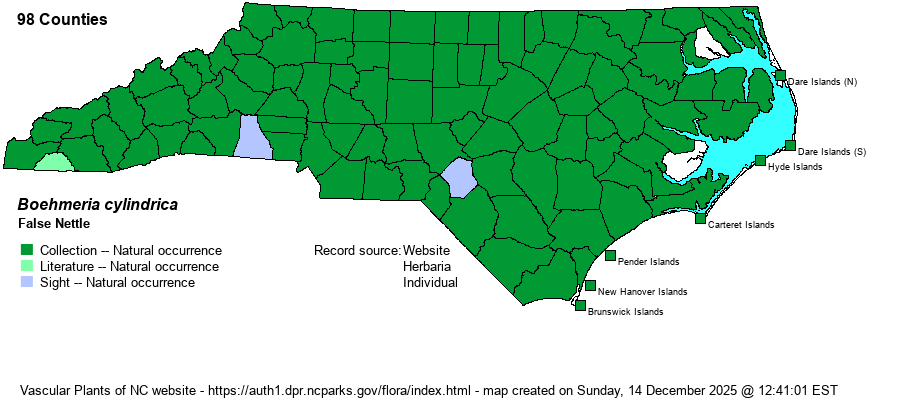| Author | (L.) Swartz | |
| Distribution | Throughout the state, and certainly present in all 100 counties.
This is a very widespread species, ranging from eastern Canada south to southern FL and most of TX. | |
| Abundance | Common to very common across the entire state. | |
| Habitat | This is a wetland species of many habitats. It is widespread in bottomland forests, swamps, marshes, ditches, and wet thickets. |
| Phenology | Blooms in July and August, and fruits in September and October. | |
| Identification | This is a very familiar wetland herb seen many times during the year. It grows to about 2-2.5 feet tall, usually unbranched, with scattered opposite leaves. Each leaf has a long petiole (often to 2 inches), and the blade is ovate, with small serrations along the margins. Each blade is 3-4 inches long and 2-3 inches wide, with 3 main veins, the outer curved inside the leaf margins. The tiny flowers grow in dense spikes from mid- and upper leaf axils, each spike about 2-3 inches long. The widespread Pilea pumila is somewhat similar, but it has shiny upper surfaces of the leaves (whereas Boehmeria leaves are dull above), usually more deeply serrated leaves, and the flower clusters are from axils but are branched and shorter than the spiky clusters in Boehmeria. Laportea canadensis has stinging hairs along the stem, alternate leaves, and terminal flower clusters. | |
| Taxonomic Comments | None
| |
| Other Common Name(s) | Smallspike False Nettle | |
| State Rank | S5 | |
| Global Rank | G5 | |
| State Status | | |
| US Status | | |
| USACE-agcp | FACW link |
| USACE-emp | FACW link |

